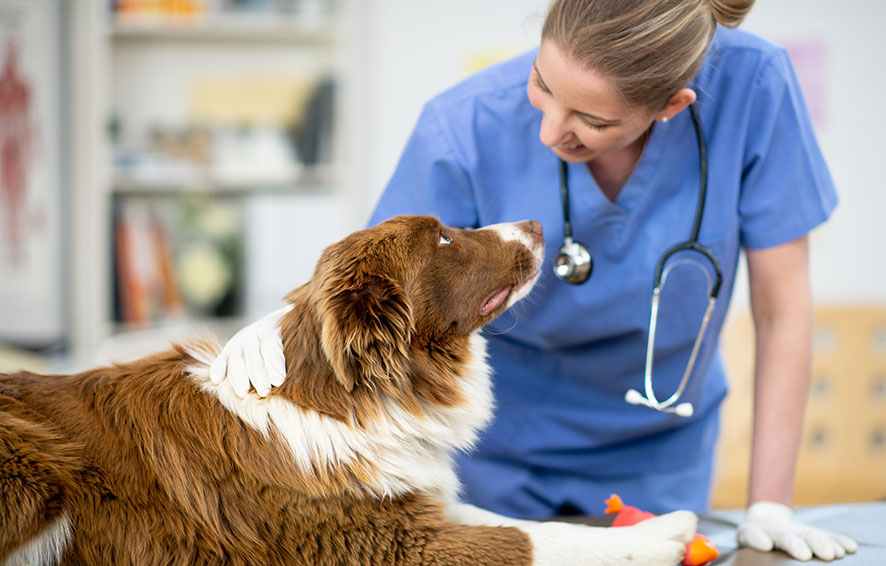Table of Contents
Last updated October 25, 2022
Pet insurance is designed to cover your pet’s unforeseen accidents and illnesses and is actually quite different from human health insurance. While only some human insurance policies bar pre-existing conditions from coverage, most pet insurance policies do, but how ‘pre-existing’ is defined varies. Essentially, your likelihood of a condition being covered is greater if you enroll your pets early before any condition occurs.
Here is a rundown of pre-existing conditions, and what your insurance policy may or may not cover.
What is a pre-existing condition?
A pre-existing condition is defined as any illness, injury, or condition that displayed symptoms prior to your pet insurance policy taking effect (including during any applicable waiting periods). This includes a recurrence of a condition your pet showed signs of prior to enrollment.
Basically, any health condition your pet had before coverage started—whether you received a formal diagnosis from a vet or not—would more than likely be considered pre-existing and ineligible for coverage.
What is and is not a pre-existing condition?
Here are some hypothetical scenarios of what may or may not be considered a pre-existing condition.
- Your dog has been itchy ever since you adopted her from the shelter. Over the past month, she’s been in several times to see her veterinarian for her itchy skin, loss of fur, and hot spots. Your veterinarian is treating the symptoms but has not diagnosed the condition yet. You decide to enroll her in pet insurance. A couple of months later your dog has another flare-up of the same itchy skin symptoms, and you take her to see her veterinarian who prescribes additional medication. This would be considered pre-existing since the clinical signs and symptoms of the condition were noted before enrollment.
- Your cat is playing with a feather toy and ingests some of the string. Your veterinarian induces vomiting to expel the string and sends your cat home with some medicine to calm his stomach. The accident inspires you to get pet insurance. Several months later your cat eats a hair tie and needs surgery to remove the foreign body. This would be considered a separate accident and not related to the previous foreign body, therefore not a pre-existing condition. They are both acute, isolated events, and the second one would be covered.
- Your dog was seen at the vet for frequent urination, excessive thirst, and weight loss that began about a month prior to enrolling with pet insurance. The doctor recommends diagnostic tests. You enroll her in pet insurance after which she has lab work performed that reveals diabetes. Though the diagnosis is determined after enrolling with pet insurance, diabetes would be considered pre-existing, since the clinical signs and symptoms occurred before enrollment.
- Your kitty darts outside one morning, just after the perimeter of the yard was sprayed with insecticide. Exposed, she becomes ill and requires hospitalization at the emergency vet. The doctor advises that she have follow-up bloodwork in weeks ahead to make sure that all after-effects of the toxicity are resolved. After this very expensive emergency visit to the vet, you enroll your cat in pet insurance in case of another accident or illness. The follow-up bloodwork tests for the toxicity are not eligible for coverage, because the signs and symptoms were pre-existing, meaning they were noted prior to enrollment.
Are there any exceptions?
One possible exception to this rule applies to acute conditions (a short duration) that completely resolve or heal. A good example is an ear infection. Let’s say your pet had one ear infection when they were six months old, and then you enrolled your pet one year later. Approximately two years later, your pet gets an ear infection; this treatment would most likely be covered simply because the first infection had completely healed and it wasn’t a chronic condition.
That “chronic” word matters – if your pet suffers from chronic ear infections, requiring medical treatment several times per year before you enroll them for pet insurance, those conditions are considered pre-existing.
Other examples of curable conditions (not chronic) include respiratory, ear, or urinary tract infections, common gastrointestinal upsets, vomiting, diarrhea, dermatitis, and some types of skin rashes.
Are bilateral conditions covered?
A bilateral condition is an injury that has happened on one side of the body, and then occurs on the opposite side. In most cases, bilateral conditions would be covered, with one exception. A pre-existing cruciate ligament injury has a bilateral exclusion. That means if the cruciate ligament on one leg is injured prior to enrollment or during the 15-day waiting period, that would not be covered, and were the same injury on the other leg to occur, it would be excluded from coverage. This is the only bilateral exclusion in the Healthy Paws plan.
How can I avoid conditions being pre-existing to policy coverage?
The easiest solution is to enroll your pet early. Don’t wait until your pet has an unexpected trip to the vet to consider pet insurance. The Healthy Paws plan covers pets as young as 8 weeks, and enrolling sooner rather than later can help you to avoid pre-existing condition exclusions.
If my pet has a pre-existing condition, should I still enroll?
Even if your pet has a pre-existing condition, pet health insurance can still be very helpful when it comes to paying your vet bills should any other ailments occur after enrollment. Many conditions are unrelated to that which was determined as pre-existing, so future accidents and illnesses can still be covered.
Find out more on our Coverage and Exclusions page, and feel free to give us a call at 855.898.8991 (or email) with any questions about your pet’s situation. If you’d like to see your rates, start by getting a free quote.








